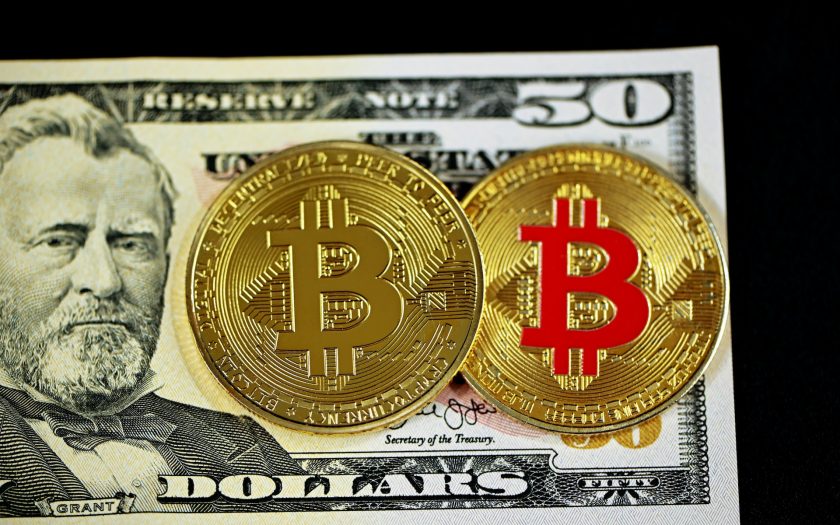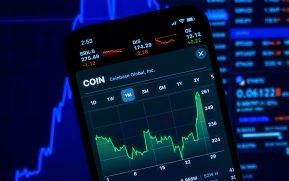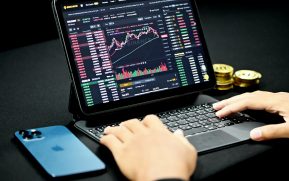
Sign in
For four years, Caroline Ellison and Sam Bankman-Fried worked together to build a crypto empire. Ellison ran the hedge fund connected to FTX, the cryptocurrency exchange Bankman-Fried founded in 2019.
Beyond work, the pair had a lot in common: Both were children of accomplished academics, studied math at prestigious universities and touted the importance of giving money away to make the world a better place. Both also lived with colleagues in a luxury penthouse in the Bahamas, and at times were reported to be romantically involved.
Now, however, Ellison has split from Bankman-Fried in a big way: She’s cooperating with federal prosecutors who have accused him of orchestrating one of the biggest financial frauds in U.S. history.
Last month, Ellison, 28, pleaded guilty to charges alleging that she, Bankman-Fried and other FTX executives conspired to steal their customers’ money to invest in other companies, make political donations and buy expensive real estate — charges that carry a maximum sentence of 110 years in prison. At a Dec. 19 hearing, Ellison apologized to FTX customers and investors, saying she knew what she did was wrong.
Bankman-Fried, 30, is next due in court on Jan. 3, when he is likely to plead not guilty, according to a person familiar with the matter who spoke on the condition of anonymity to discuss private information. In numerous interviews before his Dec. 12 arrest, he insisted that he was guilty only of poor management and didn’t knowingly defraud anyone.
FTX’s former chief technology officer, Gary Wang, 29, also pleaded guilty. “Gary has accepted responsibility for his actions and takes seriously his obligations as a cooperating witness,” said Ilan Graff, one of Wang’s lawyers. Lawyers for Ellison did not respond to a request for comment. Mark Botnick, a spokesperson for Bankman-Fried, declined to comment.
Ellison’s agreement with the government could be bad news for Bankman-Fried. The fact that she and Wang quickly pleaded guilty and signed the agreements suggests they will testify against Bankman-Fried in court, said Neama Rahmani, a Los Angeles-based trial lawyer and former federal prosecutor unconnected to the government’s case against the former crypto executives. “They’re fully cooperating,” he said.
If Ellison provides substantial assistance to prosecutors, the government will ask the judge to take that into account when she is eventually sentenced. Defendants often agree to testify against their alleged co-conspirators to lessen their own sentences. If Ellison helps the government, Rahmani estimates her sentence could be as low as five years, compared to Bankman-Fried’s likely sentence of 10 to 20 years, he said.
Ellison’s ascent to become one of the most important figures in the crypto world was quick. In a July 2020 interview on FTX’s internal podcast, she described her childhood, education and quick tour through Wall Street before landing at Alameda Research, the hedge fund owned by Bankman-Fried that was closely integrated with FTX.
While Bankman-Fried’s parents are Stanford law professors, Ellison’s mother and father are economics professors at the Massachusetts Institute of Technology. Her father, who wrote math textbooks for kids, got her into math at a young age. She read a lot, too, tackling a thick Harry Potter book when she was just 5, because she was too impatient to wait for her parents to read it to her, she said.
Her father encouraged her and her sisters to get into math competitions, which she kept up during middle and high school before going on to study math at Stanford in 2012. She chose the Bay Area university largely because it was the “best school that’s not in Boston,” she said.
Unsure of what to do with her degree, she applied for internships in her junior year at quantitative trading firms, which use complex math and algorithms to predict market movements.
Ellison did two internships at Jane Street Capital, a major quantitative trading firm, and got a job offer after college. That’s where she met Bankman-Fried, who had been working for several years at the firm’s New York office. In 2017, he quit and moved to the Bay Area, where a year later Ellison asked to meet up with him. “He canceled a few times and then eventually said yes,” she said.
Bankman-Fried told her about the cryptocurrency trading firm he’d recently started — Alameda Research. Soon, she quit Jane Street to join him. “It seemed like too cool of an opportunity to pass up,” she said.
On her Tumblr blog, called “worldoptimization,” Ellison wrote in March 2022 that she didn’t get into crypto as a “true believer.” “It’s mostly scams and memes when you get down to it,” she wrote. But she saw value in the core technology behind crypto, which allows transactions without a bank or government mediating them.
“If authoritarian governments are a serious threat to civilization, which seems not totally insane, it could end up being important,” she wrote.
At FTX, though, Ellison’s job was less about dodging authoritarian governments and more about making money from the explosion of interest and investment in cryptocurrencies. The company was one of the biggest winners of the massive crypto boom of 2020 to 2021, when regular people all over the world invested in bitcoin, ethereum and a host of other tokens. The value of the worldwide market swelled to around $3 trillion, about the same as the gross domestic product of the United Kingdom.
FTX grew rapidly as one of the main places where people could buy, sell and speculate on cryptocurrencies. Its ads featured sports stars like Tom Brady and Stephen Curry, and it paid millions for the naming rights to the Miami Heat basketball team’s stadium. Many users were investing on margin, meaning they were placing financial bets with money borrowed from the exchange, hoping their investments would pay off. By the end of 2021, FTX was handling around $350 million in crypto trades per day, making money by taking a percentage of each transaction.
Alameda was technically separate from FTX, investing and trading with the goal of making money like any other hedge fund. But it also played a key role as a market maker on the FTX exchange itself, stepping in to buy and sell tokens and other digital assets at large volumes to increase liquidity on the exchange and make it more attractive to customers.
In interviews, Ellison spoke about the challenges and excitement of the job.
“There are a lot of people who are very smart but aren’t good at necessarily the very messy world of trading, especially crypto trading,” she said on the El Momento crypto podcast posted on May 25, 2022. “You never have all the information. So you kind of just have to make your best guess based on what you can see.”
She advanced at the firm, and Bankman-Fried made her co-CEO, along with Sam Trabucco, in 2021. In August 2022, Trabucco stepped down, and Ellison became Alameda’s sole leader. (Trabucco did not respond to a request for comment.) In a January 2021 podcast, Ellison described how she was in charge of trading, with Bankman-Fried’s involvement dropping off over time.
The work was extremely lucrative. At its peak, FTX was valued by its venture capital investors at $32 billion, giving Bankman-Fried a net worth of $26 billion in spring 2022, according to the Bloomberg Billionaires Index. Bankman-Fried, Ellison and a group of their colleagues lived in a lavish penthouse in Nassau, Bahamas worth $40 million. Employees were romantically involved with each other, and Bankman-Fried and Ellison dated at times, according to a report from crypto news outlet CoinDesk. Stimulants were part of the lifestyle.
“Nothing like regular amphetamine use to make you appreciate how dumb a lot of normal, nonmedicated human experience is,” Ellison tweeted last year.
Like Bankman-Fried, Ellison was a proponent of effective altruism, a philanthropic philosophy that encourages young people to take high-paying jobs, amass wealth and donate it. She had found the movement while at Stanford, surrounded by smart and soon-to-be-wealthy people like herself.
“The ultimate goal, or one of my most important goals, I think, is maximizing my impact,” she said in the July 2020 podcast interview. “Working at Alameda is sort of good for that for a few reasons. I mean, the direct thing is making money.”
Bankman-Fried himself had pledged to give his billions to the movement. In an interview posted Jan. 21, 2021, also with the internal FTX podcast, Ellison spoke again about how she saw value in the work she was doing.
“It’s definitely stressful at times, but it gives me a sense of purpose and meaning to feel like I’m needed or feel like what I’m doing is valuable,” Ellison said.
Behind the scenes, however, FTX was allegedly breaking the law, according to federal prosecutors. The company was taking customer deposits and lending them to Alameda, which used the money to make risky trades, invest in other companies and donate to politicians, the government alleges.
Alameda had special access and privileges on the FTX exchange that the companies’ customers didn’t, essentially allowing it to borrow freely without having to pay back loans or face the same consequences if it lost money on trades it made with borrowed funds — a practice Ellison was aware of as far back as 2019, she said in court last month.
In November, Bankman-Fried said at the New York Times’ DealBook conference that he never knowingly commingled funds between Alameda and FTX and that he was surprised by the size of Alameda’s exposure on the FTX exchange.
“Clearly, I made a lot of mistakes. There are things I would give anything to be able to do over again. I did not ever try to commit fraud on anyone,” he said.
Alameda borrowed huge amounts of money from other crypto lenders to fund Bankman-Fried’s investments and donations, but as the price of crypto assets plummeted through 2022, those lenders demanded their money back. Ellison and her colleagues paid it back with customer money, she said, something the platform’s users weren’t aware was happening.
And when investors asked questions, she, Bankman-Fried and other colleagues agreed to lie, covering up the company’s true financial state and the special arrangements for Alameda to use customer assets freely, Ellison told the judge.
“I agreed with Mr. Bankman-Fried and others to provide materially misleading financial statements to Alameda’s lenders,” she said. “I am truly sorry for what I did. I knew that it was wrong.”
The judge asked if she knew it was illegal, too.
“Yes,” she said.
Dalton Bennett and Nitasha Tiku contributed to this report.
 How To Make Huge Profits In A Short Time With Crypto
How To Make Huge Profits In A Short Time With CryptoGet detailed training system that shows an absolute beginner (without any skill) how to make huge profits in a short time with crypto.
 Crypto + NFT Quick Start Course
Crypto + NFT Quick Start CourseThe #1 course for profit in the Crypto & NFT world - You will discover the secrets that 99% of people don’t know yet





